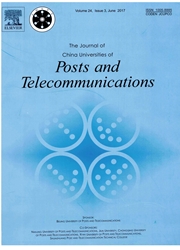

 中文摘要:
中文摘要:
In vehicular Ad-hoc networks(VANETs), beacon message is designed for the purpose of periodically broadcasting the status information(velocity, direction, etc.), which enable neighbor awareness and support some safety applications. However, under high density scenarios, fixed rate beaconing can cause severe congestion and lower the deliver rate of beacons and other kinds of messages. In this paper, we describe beaconing rate control approach with an one-dimensional Markov model, and based on this, an optimized beacon rate control scheme is proposed which aims to mitigate the congestion and maximize the deliver efficiency of beaconing. Analytical and simulation results show that our proposed scheme can achieve higher adaptability and beaconing efficiency compared with other schemes in various environments.更多还原
 英文摘要:
英文摘要:
In vehicular Ad-hoc networks (VANETs), beacon message is designed for the purpose of periodically broadcasting the status information (velocity, direction, etc.), which enable neighbor awareness and support some safety applications. However, under high density scenarios, fixed rate beaconing can cause severe congestion and lower the deliver rate of beacons and other kinds of messages. In this paper, we describe beaconing rate control approach with an one-dimensional Markov model, and based on this, an optimized beacon rate control scheme is proposed which aims to mitigate the congestion and maximize the deliver efficiency of beaconing. Analytical and simulation results show that our proposed scheme can achieve higher adaptability and beaconing efficiency compared with other schemes in various environments.
 同期刊论文项目
同期刊论文项目
 同项目期刊论文
同项目期刊论文
 A Joint Optimal Hand-off and Stability Methodology in Multi-Flow Priority-based Heterogeneous Networ
A Joint Optimal Hand-off and Stability Methodology in Multi-Flow Priority-based Heterogeneous Networ 期刊信息
期刊信息
